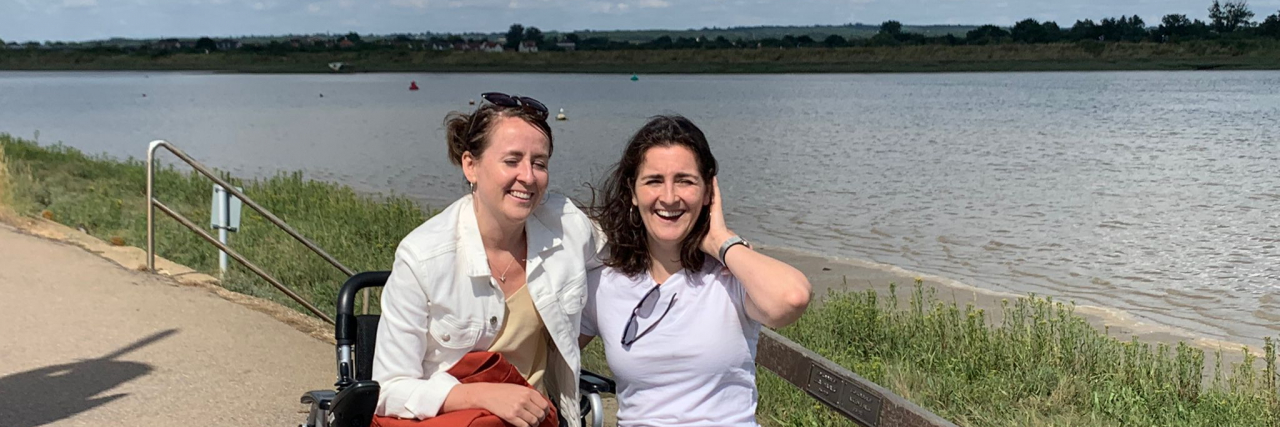We met four years ago. At first, I hired you for six weeks, then another six weeks. I was in denial; I thought you were temporary. Finally, I resigned and bought a cheaply made version of you, still not fully invested in the idea of having to use a chair.
The first time we went out together, I was in awe. After months of being unable to get out of bed, I was taken out to feel the fresh air on my cheeks, hear the birdsong and be among people. Emerging onto the street, I felt upbeat. But my mood was soon shattered by people’s responses to me, which were completely varied. Many averted their eyes or looked straight through me, as if I had donned an invisibility cloak (I pinched my arm, but I was still there). Others bestowed sympathetic smiles, which I felt obligated to return, to prove to them that I wasn’t angry or bitter about my predicament. But I was, because of their reactions.
I couldn’t fathom why I was suddenly being treated completely differently. For instance, as a young woman, I was used to attention from men, who were not giving me a second look. I felt unattractive and started buying frumpy and colorless clothes to blend into my new invisible existence. Till assistants and secretaries talked over my head as if I wasn’t there, making me feel like a child or a second-class citizen. Furthermore, I’d been demoted to the height of kids and dogs, who sniffed me excitedly or barked at the chair. Some asked with unabashed curiosity why I was in a chair, or what was wrong with my legs, assuming I’d been in an accident. I had to explain that it was my brain, nerves, and muscles, not just my legs. As I began to regain some strength, I could walk for short distances, which meant I could experience being treated “normally” on occasion. This confused me even more. Being invisible one moment and seen the next. It also baffled anyone who saw me stand up and exit the chair; people stopped in their tracks, jaws dropped, as if they had just witnessed a miracle.
As we shared experiences together of the theatre, museums and galleries, music festivals, and friends’ weddings, and traveled together to Southern Spain, Brussels, Berlin, London, Newcastle and Yorkshire, I began to fall in love with you. Your wheels opened up the world for me again and let me see new things. (I have to mention my very willing and eco-friendly energy source; my parents, who pushed me over cobbled stones, down country lanes, up steep banks, and who maneuvered me through the most inaccessible of areas.) You were there for me through thick and thin; when I was grieving, or too weak to hold my head up, and when I was jolly and laughing with those I loved.
As I got used to you, I began to take more pride in my appearance again, doing my hair and makeup and wearing colorful clothes. I now wanted to be noticed. “A young woman in a wheelchair? How tragic,” they thought. No, how wonderful. I had freedom again, which as a free spirit who loved to travel, was priceless. My new outlook must have shined through, as, out of the blue I even shared a romantic kiss in my chair, something I never imagined would happen.
These days, I’ve got a state-of-the-art electric version of you. Comfy with a sleek design, I zip past walkers in a flash of silver. I’ve tried out mobility scooters and off-roaded in country parks at 4 mph (how great that you don’t need a driving license to use these, since driving lessons have been off the cards for some years now). And though I’m lucky enough to be able to stand up and go on short walks, which I continue to build on, hoping to one day be able to hike again, I don’t hate or blame the chair, and no longer want to burn it on a bonfire or toss it in the sea. It’s been a loyal and invaluable companion!
*To any healthy people reading this: don’t be afraid of wheelchair users. We don’t expect special treatment, but we do want to be treated kindly, with as much normality as possible. One day you may rely on a mobility aid too, so let’s make the world an easier place for everyone.

